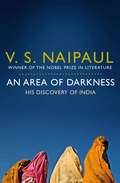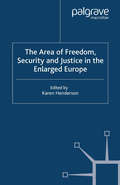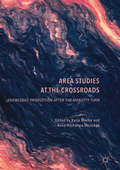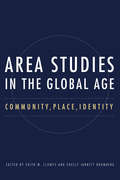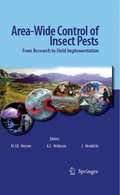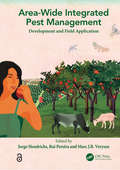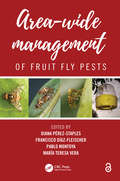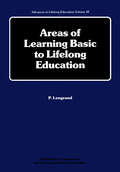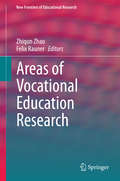- Table View
- List View
Area of a parallelogram (UEB uncontracted)
by RnibThis page shows a simple shape. There is a locator dot shown, which will be at the top left, when the image is the correct way up. The parallelogram with its height and base labelled in centimetres is in the middle of the page. The generic formula for working out the area of a parallelogram is given. The calculation for the area of this parallelogram is at the bottom of the page.
Area of a trapezium (large print)
by RnibThis page shows two simple shapes. There is a locator dot shown, which will be at the top left, when the image is the correct way up. The trapezium at the top of the page has its dimensions labelled with letters. These are referred to in the formula just up from the trapezium. This is the generic formula for working out the area of a trapezium. A second trapezium is at the bottom of the page, labelled with dimensions in metres. The calculation for the area of this trapezium is at the bottom of the page.
Area of a trapezium (tactile)
by Sheffield Vi ServiceThis is a labelled diagram showing how the area of a trapezium is calculated.
Area of a trapezium (UEB contracted)
by RnibThis page shows two simple shapes. There is a locator dot shown, which will be at the top left, when the image is the correct way up. The trapezium at the top of the page has its dimensions labelled with letters. These are referred to in the formula just up from the trapezium. This is the generic formula for working out the area of a trapezium. A second trapezium is at the bottom of the page, labelled with dimensions in metres. The calculation for the area of this trapezium is at the bottom of the page.
Area of a trapezium (UEB uncontracted)
by RnibThis page shows two simple shapes. There is a locator dot shown, which will be at the top left, when the image is the correct way up. The trapezium at the top of the page has its dimensions labelled with letters. These are referred to in the formula just up from the trapezium. This is the generic formula for working out the area of a trapezium. A second trapezium is at the bottom of the page, labelled with dimensions in metres. The calculation for the area of this trapezium is at the bottom of the page.
Area of a triangle (large print)
by RnibThis page shows a small diagram. There is a locator dot shown, which will be at the top left, when the image is the correct way up. There is a diagram of a triangle and the equation for finding the area is written next to it.
Area of a triangle (UEB contracted)
by RnibThis page shows a small diagram. There is a locator dot shown, which will be at the top left, when the image is the correct way up. There is a diagram of a triangle and the equation for finding the area is written next to it.
Area of a triangle (UEB uncontracted)
by RnibThis page shows a small diagram. There is a locator dot shown, which will be at the top left, when the image is the correct way up. There is a diagram of a triangle and the equation for finding the area is written next to it.
An Area of Darkness: His Discovery of India
by Sir V. S. NaipaulThe first book in V. S. Naipaul’s acclaimed Indian trilogy – with a preface by the author. An Area of Darkness is V. S. Naipaul’s semi-autobiographical account – at once painful and hilarious, but always thoughtful and considered – of his first visit to India, the land of his forebears. He was twenty-nine years old; he stayed for a year. From the moment of his inauspicious arrival in Prohibition-dry Bombay, bearing whisky and cheap brandy, he experienced a cultural estrangement from the subcontinent. It became for him a land of myths, an area of darkness closing up behind him as he travelled . . . The experience was not a pleasant one, but the pain the author suffered was creative rather than numbing, and engendered a masterful work of literature that provides a revelation both of India and of himself: a displaced person who paradoxically possesses a stronger sense of place than almost anyone. ‘His narrative skill is spectacular. One returns with pleasure to the slow hand-in-hand revelations of both India and himself’ The Times
The Area of Freedom, Security and Justice in the Enlarged Europe (One Europe or Several?)
by K. HendersonThe European Union is constantly changing, both in the number of countries it embraces and in policy areas where it plays a major role. The new millennium has witnessed two major changes in the EU's scope. On 1 May 2004, it enlarged to include ten new member states; and the new European Constitution defines providing citizens with an 'area of freedom, security and justice' as one of its primary aims. This book is unique in analyzing the interplay of the two spheres.
Area of irregular shapes (large print)
by RnibThis page shows two square diagrams. There is a locator dot shown, which will be at the top left, when the image is the correct way up. There is a different irregular shape in each diagram. They have a grid of twenty five squares marked out by dashed lines on each of them. Counting the squares helps estimate the area of the irregular shape.
Area of irregular shapes (UEB contracted)
by RnibThis page shows two square diagrams. There is a locator dot shown, which will be at the top left, when the image is the correct way up. There is a different irregular shape in each diagram. They have a grid of twenty five squares marked out by dashed lines on each of them. Counting the squares helps estimate the area of the irregular shape.
Area of irregular shapes (UEB uncontracted)
by RnibThis page shows two square diagrams. There is a locator dot shown, which will be at the top left, when the image is the correct way up. There is a different irregular shape in each diagram. They have a grid of twenty five squares marked out by dashed lines on each of them. Counting the squares helps estimate the area of the irregular shape.
Area of shapes (tactile)
by Adrian FarnsworthThese three pages each show a different shape and the formula needed to calculate its area.
Area of Suspicion (Murder Room)
by John D. MacDonaldFour years ago Gevan Dean found his fiancée Niki Webb in his brother Ken's arms and fled his hometown for a peaceful life in the Florida sun. But now Ken is dead - murdered by a thief, the police say - and Gevan is desperately needed to keep their company, Dean Products, from falling apart.Everywhere Dean turns he finds only questions and confusion. But he doesn't suspect the truth behind Ken's murder or the real goings-on at Dean Products until the stakes get too high to ignore - and the truth explodes violently in his face ...
Area Studies at the Crossroads: Knowledge Production after the Mobility Turn
by Katja Mielke Anna-Katharina HornidgeIn this pioneering volume, leading scholars from a diversity of backgrounds in the humanities, social sciences, and different area studies argue for a more differentiated and self-reflected role of area-based science in global knowledge production. Considering that the mobility of people, goods, and ideas make the world more complex and geographically fixed categories increasingly obsolete, the authors call for a reflection of this new dynamism in research, teaching, and theorizing. The book thus moves beyond the constructed divide between area studies and systematic disciplines and instead proposes methodological and conceptual ways for encouraging the integration of marginalized and often overseen epistemologies. Essays on the ontological, theoretical, and pedagogical dimension of area studies highlight how people’s everyday practices of mobility challenge scholars, students, and practitioners of inter- and transdisciplinary area studies to transcend the cognitive boundaries that scholarly minds currently operate in.
Area Studies in the Global Age: Community, Place, Identity (NIU Series in Slavic, East European, and Eurasian Studies)
This interdisciplinary volume is a new introduction to area studies in the framework of whole-world thinking. Emerging in the United States after World War II, area studies have proven indispensable to American integration in the world. They serve two main purposes: to equip future experts with rich cultural-historical and political-economic knowledge of a world area in its global context and advanced foreign language proficiency, and to provide interested readers with well-founded analyses of a vast array of the world's communities.Area Studies in the Global Age examines the interrelation between three constructions central to any culture—community, place, and identity—and builds on research by scholars specializing in diverse world areas, including Africa; Central, East, and North Asia; Eastern and East Central Europe; and Latin America. In contrast to sometimes oversimplified, globalized thinking, the studies featured here argue for the importance of understanding particular human experience and the actual effects of global changes on real people's lives. The rituals, narratives, symbols, and archetypes that define a community, as well as the spaces to which communities attach meaning, are crucial to members' self-perception and sense of agency. Editors Edith W. Clowes and Shelly Jarrett Bromberg have put into practice the original mission of US area studies, which were intended to employ both social science and humanities research methods. This important study presents and applies a variety of methodologies, including interviews and surveys; the construction of databases; the analysis of public rituals and symbols; the examination of archival documents as well as contemporary public commentary; and the close reading and interpretation of fiction, art, buildings, cities, and other creatively produced works in their social contexts. Designed for advanced undergraduate and beginning graduate students in allied disciplines, Clowes and Bromberg's volume will also appeal to readers interested in internationally focused humanities and social sciences.
Area-Wide Control of Insect Pests: From Research to Field Implementation
by M. J. B. Vreysen A. S. Robinson J. HendrichsInsect pests are becoming a problem of ever-more biblical proportions. This new textbook collates a series of selected papers that attempt to address various fundamental components of area-wide insect pest control. Of special interest are the numerous papers on pilot and operational programs that pay special attention to practical problems encountered during program implementation. It’s a compilation of more than 60 papers authored by experts from more than 30 countries.
Area-wide Integrated Pest Management: Development and Field Application
by Jorge Hendrichs Rui Pereira Marc J. B. VreysenOver 98% of sprayed insecticides and 95% of herbicides reach a destination other than their target species, including non-target species, air, water and soil. The extensive reliance on insecticide use reduces biodiversity, contributes to pollinator decline, destroys habitat, and threatens endangered species. This book offers a more effective application of the Integrated Pest Management (IPM) approach, on an area-wide (AW) or population-wide (AW-IPM) basis, which aims at the management of the total population of a pest, involving a coordinated effort over often larger areas. For major livestock pests, vectors of human diseases and pests of high-value crops with low pest tolerance, there are compelling economic reasons for participating in AW-IPM. This new textbook attempts to address various fundamental components of AW-IPM, e.g. the importance of relevant problem-solving research, the need for planning and essential baseline data collection, the significance of integrating adequate tools for appropriate control strategies, and the value of pilot trials, etc. With chapters authored by 184 experts from more than 31 countries, the book includes many technical advances in the areas of genetics, molecular biology, microbiology, resistance management, and social sciences that facilitate the planning and implementing of area-wide strategies. The book is essential reading for the academic and applied research community as well as national and regional government plant and human/animal health authorities with responsibility for protecting plant and human/animal health.
Area-wide Integrated Pest Management: Development and Field Application
by Jorge Hendrichs; Rui Pereira; Marc J.B. VreysenOver 98% of sprayed insecticides and 95% of herbicides reach a destination other than their target species, including non-target species, air, water and soil. The extensive reliance on insecticide use reduces biodiversity, contributes to pollinator decline, destroys habitat, and threatens endangered species. This book offers a more effective application of the Integrated Pest Management (IPM) approach, on an area-wide (AW) or population-wide (AW-IPM) basis, which aims at the management of the total population of a pest, involving a coordinated effort over often larger areas. For major livestock pests, vectors of human diseases and pests of high-value crops with low pest tolerance, there are compelling economic reasons for participating in AW-IPM. This new textbook attempts to address various fundamental components of AW-IPM, e.g. the importance of relevant problem-solving research, the need for planning and essential baseline data collection, the significance of integrating adequate tools for appropriate control strategies, and the value of pilot trials, etc. With chapters authored by 184 experts from more than 31 countries, the book includes many technical advances in the areas of genetics, molecular biology, microbiology, resistance management, and social sciences that facilitate the planning and implementing of area-wide strategies. The book is essential reading for the academic and applied research community as well as national and regional government plant and human/animal health authorities with responsibility for protecting plant and human/animal health.
Area-Wide Management of Fruit Fly Pests
by Pablo Montoya Diana Perez-Staples Francisco Diaz-Fleischer Maria Teresa VeraFruit fly (Diptera: Tephritidae) pests have a profound impact on horticultural production and economy of many countries. It is fundamental to understand their biology and evaluate methods for their suppression, containment, or eradication. Area-Wide Management of Fruit Fly Pests comprises contributions from scientists from around the world on several species of tephritids working on diverse subjects with a focus on area-wide management of these pests. The first three sections of the book explore aspects of the biology, ecology, physiology, behavior, taxonomy, and morphology of fruit flies. The next two sections provide evidence on the efficacy of attractants, risk assessment, quarantine, and post-harvest control methods. The fifth and sixth sections examine biological control methods such as the Sterile Insect Technique and the use of natural enemies of fruit flies. The seventh section focuses on area-wide integrated pest management and action programs. Finally, the eighth section examines social, economic, and policy issues of action programs aimed at involving the wider community in the control of these pests and facilitate the development of control programs. Features: Presents information on the biology of tephritid flies. Provides knowledge on the use of natural enemies of fruit flies for their biological control. Includes research results on models and diets used for the Sterile Insect Technique. Reports developments on the chemical ecology of fruit flies that contribute to make control methods more specific and efficient. Reviews subjects such as Holistic Pest Management and Area-Wide Management Programs including social, economic, and policy issues in various countries. The Open Access version of this book, available at https://www.taylorfrancis.com/books/9780429355738, has been made available under a Creative Commons Attribution-Non Commercial-No Derivatives 4.0 license.
Area-Wide Management of Fruit Fly Pests
by Pablo Montoya Diana Perez-Staples Francisco Diaz-Fleischer Maria Teresa VeraFruit fly (Diptera: Tephritidae) pests have a profound impact on horticultural production and economy of many countries. It is fundamental to understand their biology and evaluate methods for their suppression, containment, or eradication. Area-Wide Management of Fruit Fly Pests comprises contributions from scientists from around the world on several species of tephritids working on diverse subjects with a focus on area-wide management of these pests. The first three sections of the book explore aspects of the biology, ecology, physiology, behavior, taxonomy, and morphology of fruit flies. The next two sections provide evidence on the efficacy of attractants, risk assessment, quarantine, and post-harvest control methods. The fifth and sixth sections examine biological control methods such as the Sterile Insect Technique and the use of natural enemies of fruit flies. The seventh section focuses on area-wide integrated pest management and action programs. Finally, the eighth section examines social, economic, and policy issues of action programs aimed at involving the wider community in the control of these pests and facilitate the development of control programs. Features: Presents information on the biology of tephritid flies. Provides knowledge on the use of natural enemies of fruit flies for their biological control. Includes research results on models and diets used for the Sterile Insect Technique. Reports developments on the chemical ecology of fruit flies that contribute to make control methods more specific and efficient. Reviews subjects such as Holistic Pest Management and Area-Wide Management Programs including social, economic, and policy issues in various countries. The Open Access version of this book, available at https://www.taylorfrancis.com/books/9780429355738, has been made available under a Creative Commons Attribution-Non Commercial-No Derivatives 4.0 license.
Areas of Learning Basic to Lifelong Education (Advances in Lifelong Education #Volume 10)
by P. LengrandThe study of lifelong education brings to light aspects of education which go beyond the purely intellectual sphere into all dimensions of being.These dimensions assume great importance for individuals seeking to develop capacities which will enable them to cope successfully with the challenges they will confront throughout life and to participate constructively in the larger processes of development. The subjects covered include communication, corporal man, time, space, art, man as citizen, the ethical domain, technology and the scientific spirit, and from these papers emerges the unifying theme of the interrelationship between morality and technology. This relationship poses the vital question of how individuals should decide which of the new technologies that proliferate in contemporary society is likely to be beneficial to humankind and which destructive. The book is the result of a collective project undertaken by the Unesco Institute of Education (UIE). The approach adopted is new in two respects: first, each theme is treated in terms of learning, and second, each is related to the others in a global and transdisciplinary view of personal development. It is written by experts from various countries who are known internationally for their outstanding contributions to research into the problems of learning as a basis for lifelong education, and will be important reading for all those involved in the study and practice of lifelong education.
Areas of Vocational Education Research (New Frontiers of Educational Research)
by Zhiqun Zhao Felix RaunerThis book provides an overview of some fundamental topics of international Technical and Vocational Education and Training (TVET), e.g. genesis of TVET research, fields of TVET research, curriculum development, TVET planning and developing, methods of TVET research etc. The International Handbook of Technical and Vocational Education and Training Research (Rauner/Maclean), published in 2009 by Springer, was the first handbook to provide a comprehensive coverage of TVET research in an international context and with a special focus on research and research methods. Building upon the great success of this handbook and replying to the great demand expressed by researchers, (postgraduate) students and decision makers in VET, this new book “Areas of Vocational Education Research” focuses on providing an easier accessible overview of the fundamental topics of international TVET research.
Areas - trapezium (tactile)
by RnibThis diagram shows a trapezium with 3 parts labelled with arrows. The height is labelled h, the top length is labelled a and the bottom length is labelled b. These lengths allow you to work out the area of the shape.

